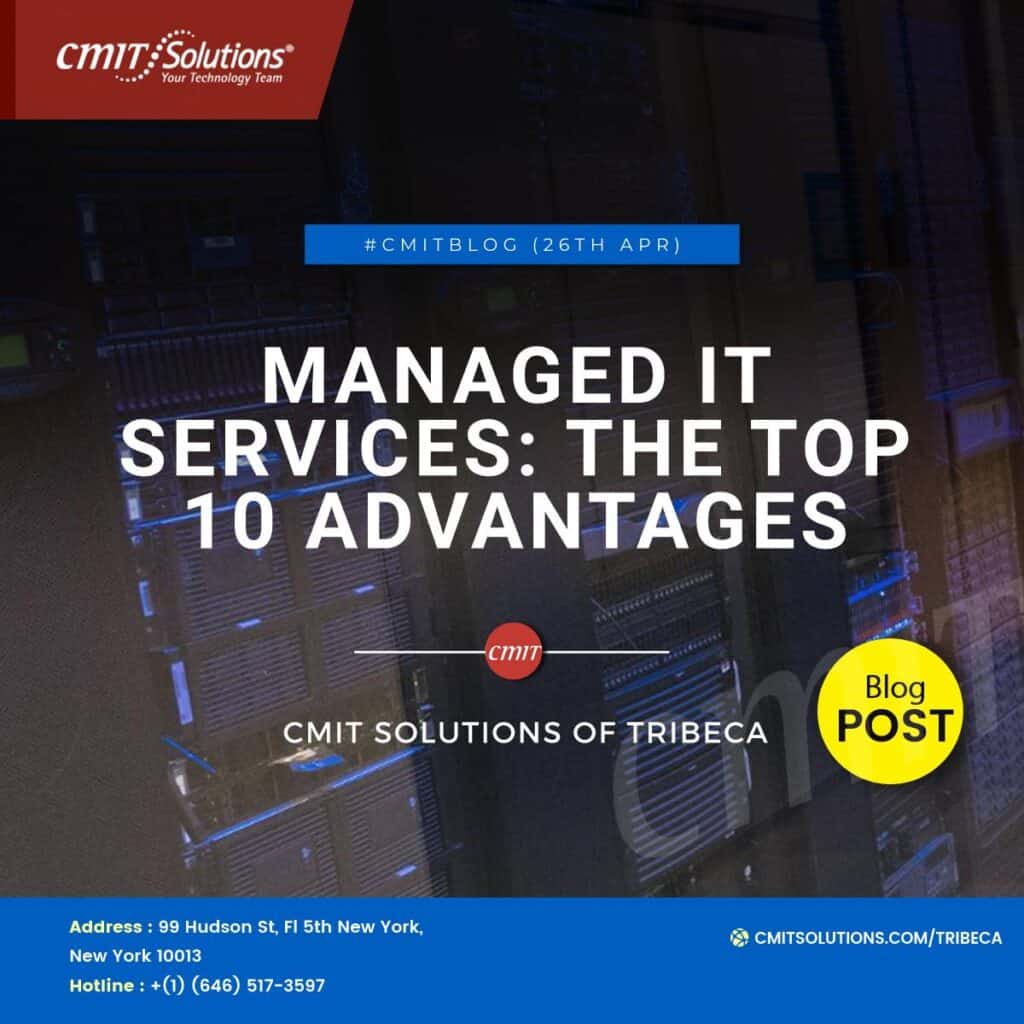Modern business technology is in a heady state. Choosing the proper IT partner is now more important than ever because of digital transformation, the pandemic, and security breaches. Doing so will help you stay connected to your consumers and keep your competitive advantage.
Companies are consolidating their computer divisions while combining numerous communications tools to keep up. The day when businesses need sizable computer rooms and in-house IT staff is long gone. These days, the majority of communication takes done through mobile devices, and data is stored on cloud servers. As a result, parts of an IT department have gradually been improved or replaced using outsourced IT services.
It’s important to think about this vital connection right now more than ever. Consider the recent increase in ransomware attacks as an illustration. This pattern has cost businesses money in the form of missed productivity and actual currency, as well as consumer confidence. Or, take into account the findings of Harvard research, which showed that, following the epidemic, one in six workers will work entirely from home, or at least two days each week.
Although the ten-year transition to cloud computing and UC is generally advantageous for businesses in terms of cost and productivity, cloud technology also has its own set of challenges that call for professional aid to comprehend.
Given the variety of Managed IT solutions available to you and your company, we thought we’d share this primer with you so you can better understand your choices.
Different Types of IT Services
Different kinds of managed service providers (MSPs) give their clients company system support and other kinds of assistance. The IT service categories may typically be divided into the following three tiers.
1. MSPs at lower levels
The simplest pure-play MSPs will provide IT assistance for your company’s computer network and system, including operations like software installation and integration into pre-existing infrastructures. System monitoring, which maintains tabs on software applications for functionality and safety reasons, is one of your other tasks. The MSP will alert the client company of any potential danger signals if issues occur. The client business will subsequently be responsible for taking preventative measures and retaliatory actions to neutralize the danger.
Pure-play MSPs often won’t be held accountable for a client company’s business issues or IT plans.
2. Middle-Scale MSPs
Value-added MSPs are the managed service providers that come after that. A mid-level provider’s job is to give all essential assistance in addition to a wider variety of technology services. As a result, when the MSP has a software system up and operating, their IT specialists will keep an eye on it for performance problems and warning indications, and they’ll respond quickly if any dangers do surface.
Every time a new version or security patch is made available to users, the MSP will also offer software maintenance and keep programs updated throughout a client’s network. Even more, mid-level MSPs provide scalability planning, enabling you to scale up or down the service to your business’s requirements.
3. Senior MSPs
The more experienced MSPs provide client companies with outsourced IT services. At this level, in addition to receiving all the assistance and security provided by the mid-level MSP, you would also receive a wide range of assistance for your wireless network, communications services, data analytics, and a lot more. Your business may even have access to a sophisticated computer networking system that only authorized workers could use from anywhere.
High-level IT specialists will also look at analytics to keep you updated on changes that might affect how your business operations progress. Some MSPs at this level also provide software-as-a-service (SaaS) applications that you may subscribe to and lease for your business.
Depending on your business’s current demands, you could require a managed services provider to assist you directly. It may be time to employ a high-level, outsourced IT provider if your business has grown to the point where system upkeep is too complicated and expensive to manage internally.
Examples of Managed Services IT Providers Offer
Typically, a managed services provider will provide several outsourced IT services. Depending on the level of service you choose from an MSP, you can receive assistance with wireless networking, cloud backup, troubleshooting, and data analytics. The following services are frequently offered at various degrees by MSPs nowadays.
1. Infrastructure and Networking
MSPs provide a selection of support services that can assist your business in managing WANs, LANs, and other components of a computer system. One or more of the following services may be included in the package, depending on the degree of managed IT assistance you choose from a provider.
- Installing software and hardware on-site at your company’s headquarters rather than using internal IT personnel
- cellular networking enables wireless connectivity for your team from everywhere
- Cloud infrastructure that is managed enabling coworkers to participate in meetings and work together on projects via cloud-based enterprise software portals
- Print services that are remotely managed: enabling authorized employees to print documents from anywhere using the business network
- Managed storage backup: Enabling staff to upload data and update tasks from any location with the security of remote backup
Your organization may delegate the technical facets of cloud and wireless administration to qualified hands with different degrees of networking and infrastructure from a managed IT service, freeing up your personnel to concentrate on business.
2. Security Administration
With a variety of security management and risk prevention services, such as the ones listed below, a managed IT provider may make the computer system at your business safer.
- Anti-malware software: Adding applications to your organization’s computers to maintain your network free of viruses
- Maintenance and patching Keeping up with the most recent software upgrades to make sure that hackers and viruses never get past the security measures in place at your organization and infect your system
- Adaptability for applications: ensuring that the hardware elements and software applications that make up the network of your business are completely integrated and interoperable with one another.
Your network security layers will be updated right away with every new patch and software release if you choose a managed service provider.
3. Telephone Services
The following types of assistance are provided by managed services providers as part of an IT communications package.
- Data: Enabling employees to communicate and receive information via computers, laptops, and mobile devices from any place, whether near or far away.
- Voice: Enabling coworkers to communicate with one another via PCs and cell phones from diverse places, both one-on-one and in multi-party conversations.
- Making conferences that employees may join from practically anywhere with an Internet or Wi-Fi connection viable for your business
Your firm might be more in sync than ever with IT communication services. Even a call center that is operated remotely would fall under this category of services.
4. SaaS (Software as a Service)
A managed services provider can have software that your business can subscribe to for yearly or monthly access that is unrestricted. The SaaS can be a piece of software that the IT provider creates and supports or one that it makes available from a third-party developer. Your personnel can concentrate on business since all updates and security patches are remotely implemented as soon as they become available.
With SaaS, your staff can relax knowing that the most cutting-edge software applications will be 100% secure on any device and fully functioning. System upgrades and in-house software deployments are made easier by SaaS.
5. Analytical Data
Companies that are not directly involved in the IT industry may find it difficult to browse computer information. A managed service provider may relieve your business of a load of analysis as networking technology grows more complex. Multiple levels of study, ranging from data observations to pattern studies, may be included in this attempt. The important components of this information will be gathered and translated by the IT services professionals so that your team members may access it. This will enable your organization to more successfully anticipate emerging trends and achieve your strategic goals.
6. Assistance Services
Your team may run into problems with a certain system application, prompt, or policy while conducting business. Each employee may seek assistance from the remote support center for any difficulty with managed IT support services.
There are many tiers of support services, ranging from desktop program assistance to aid with hardware and software problems. The objective of a managed service provider is to build and administer software remotely that a client firm may utilize with minimal or no learning curves and no compatibility issues. If a problem does occur, it is usually the MSP’s responsibility to resolve it and make sure that every client staff is familiar with the relevant technology.







